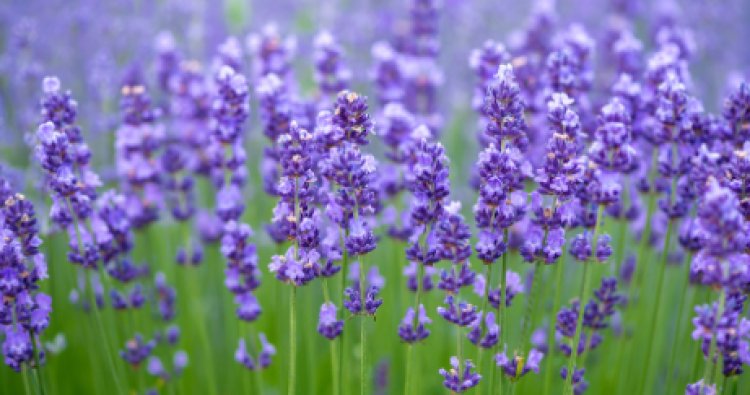How to Grow Lavender Plants
Lavender is an exotic Mediterranean flowering herb. It is one of the world's most fragrant herbs, well known for its antibacterial and anti-inflammatory effects. It is also a great addition to homemade gourmet meals, beverages, and self-care beauty routines.

It is easy to grow lavender herbs at home. Lavender herbs need well-drained soil to thrive whether it is planted in a pot or a garden. Choose a location for your lavender plant that will enable it to receive at least 6 to 8 hours of direct sunlight each day and has alkaline soil.
Selecting a location for the lavender herbs
Light: For optimum growth, lavender needs full light and well-drained soil. They might thrive in midday shade in hot summer areas.
Soil: Low to moderately fertile soils are preferable for lavender growth, therefore avoid adding organic matter to the soil prior to planting. In neutral to slightly alkaline soils, lavender thrives. To achieve the best results, perform a quick soil test. Add lime to the soil to raise the pH to about 7.0.
Spacing: Plant spacing should be between one and three feet, depending on the variety.
Planting Season: Plant in the spring or early summer in colder climates. Plant in the early fall in warmer regions so that the roots can take root during the cool, wet winter.

Steps on planting lavender
Start with plants that are robust and have established root systems.
Create a planting hole that is twice as deep and twice as wide as your lavender plant's root ball. You can either prepare the entire bed before planting, or you can prepare the soil for each planting hole when you are planting many plants.
Create a well-draining soil mixture in a container by mixing dirt with gravel or sand.
Plant lavender in a way that allows the top of the root ball to be leveled with the soil surface. Place more soil around the plant and firmly pack it down.
Water down the soil to reduce air pockets and compact the soil. Only water the plant if the garden is really dry. Fast-draining soil is ideal for lavender because it keeps the roots from decaying.
Taking care of lavender plants

Lavender develops into a rounded, bushy shrub in warmer areas. In colder areas, it is a perennial that grows more slowly. To avoid fungus or powdery mildew in humid conditions, make sure there is enough room for appropriate airflow. Constantly check the plants to assess the mature size of the types you are growing.
Staking is not necessary for lavender plants, as they grow to be between one and three feet tall and wide.
Lavender is drought resistant once it has grown and doesn't require much watering. Lavender plants frequently experience stress from overwatering but ensure to water young plants.
Fertilizing: The lavender plants shouldn't require any fertilizer.
Mulching: Lavender shouldn't require mulch because it is drought-hardy. Mulch made of sand or gravel in a light hue can aid with drainage and maintain soil and plant warmth.
Pruning and trimming: Young lavender stems provide it with the nicest and most aromatic foliage and blossoms. Cut back the woody stems by a third when pruning plants that are two years old and older in the spring. This promotes new growth by improving foliage and blooming.

Benefits of lavender
Air Purifying Properties - The vibrant color enhances the aesthetics of your garden. Lavender plants also attract bees and butterflies. Lavender is also a natural air purifier. You could grow it in home or office in gardens as well as pots for healthier families and employees.
Benefits of Lavender Herb for Skin - Lavender is an anti-aging and antiseptic healing herb recommended for all skin types. The lavender essential oil can be applied directly to the skin to cure skin issues such as acne, eczema, and even psoriasis. It is also helpful in delaying fine lines, wrinkles, and crow’s feet.
Medical benefits - Lavender essential oil provides quick relief for headaches, sunburns, bug bites, and joint pain.
Lavender beverages - Lavender beverages can relieve anxiety and headaches. Mix dried lavender flower heads with dried chamomile flowers and other calming herbs to make teas
Lavender in Food – Lavender is a versatile herb for cooking, it adds a distinctive touch to even the most basic dishes. There is endless variety of delicacies that use lavender flavoring; they include hot chocolate, salads, cakes, crepes, tarts, ice creams, pancakes, cookies, and scones.

























